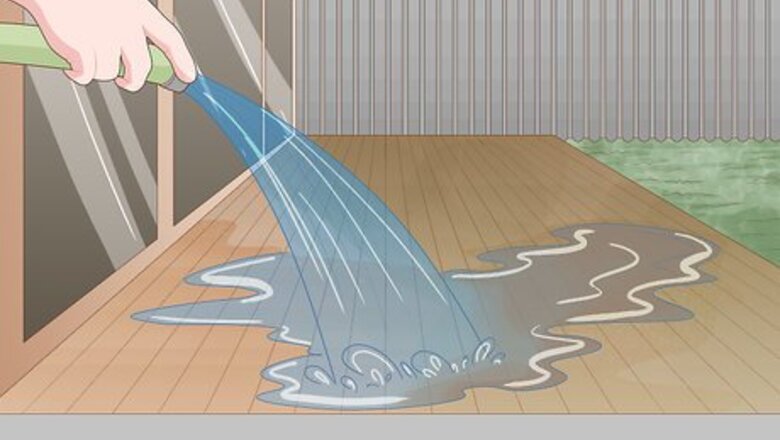
views
Removing Simple Debris and Spills
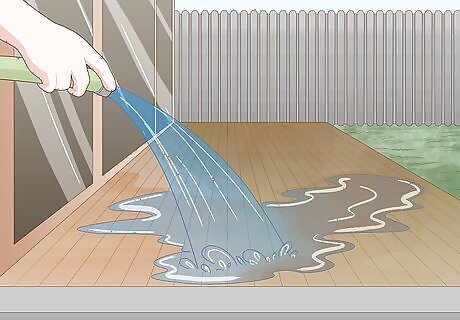
Spray down the deck with a hose. Newer dust, dirt, pollen, and debris that’s piled on the deck’s surface should flow off with just a good rinse. Only the caked-on debris will remain after this. Set the hose nozzle to the “spray” setting so there’s some power behind the spray. This helps remove debris. If you use a power washer instead of a garden hose, the model should be less than 3,100 psi to avoid damaging the deck.
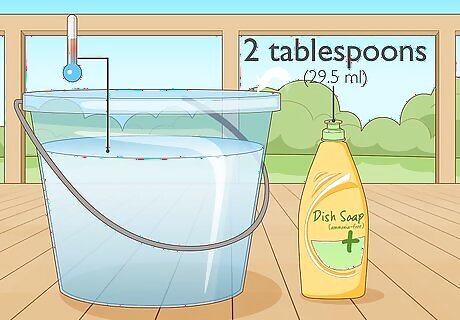
Mix a soap and water solution for caked-on debris. Debris can hide in the ridges and patterns on a composite deck, and this requires some scrubbing with a soapy mixture. First fill a bucket with warm water. Then mix in 2 tablespoons (29.5 ml) of ammonia-free dish soap. Stir or shake the mixture so suds form. It’s important to use ammonia-free dish soap so the soap doesn’t stain your deck or react with any other chemicals you may use for cleaning.
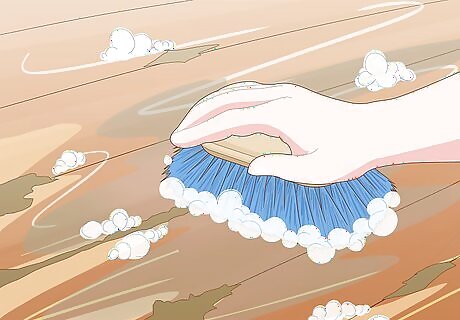
Scrub the deck with a soft-bristle brush. Dip the brush in your soapy mixture and start scrubbing the ridges and patterns on your deck. Focus on these areas because dust and debris can hide in these spaces. You can also get a soft-bristle broom, which will make cleaning the entire deck much easier on your back. Depending on the size of your deck, you may have to mix more soap solution during the cleaning process. Remove all caked-on debris, because this will form stains if left untreated.
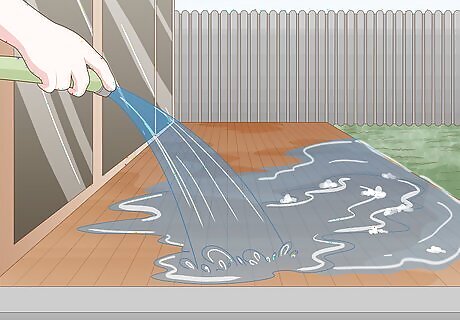
Rinse the deck thoroughly with a hose. Complete the job with one final rinse from your hose. Remove all suds and bubbles to avoid staining the deck. Leftover soapy water can form a sticky film on your deck. This could not only stain the deck, but it also attracts even more dust and debris. Save yourself future trouble by doing a thorough rinse.
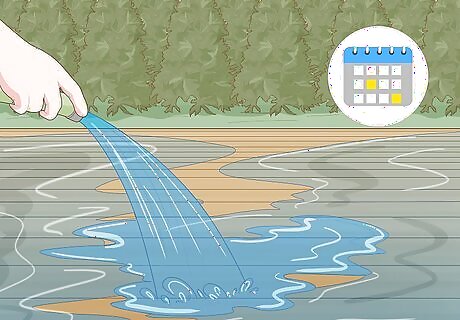
Repeat this clean every 6 months. A semi-annual clean removes the dirt and debris that has accumulated on your deck throughout the year. This regular cleaning cycle helps prevent stains and imperfections from forming.
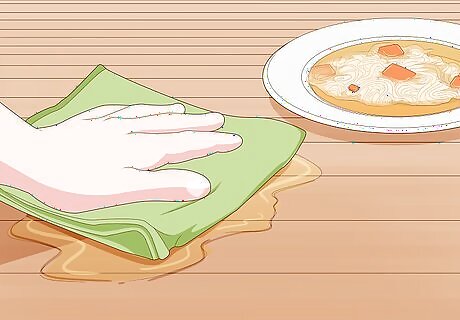
Clean all food spills as soon as possible. The oil and grease in food can soak into the composite deck and stain it. Don’t let any food spills sit. Pick up the food immediately and carry out a clean as soon as possible. After picking up all the food, you can follow the same cleaning steps to prevent oil and grease from staining your deck.
Using Specialized Cleaner for Deep Stains
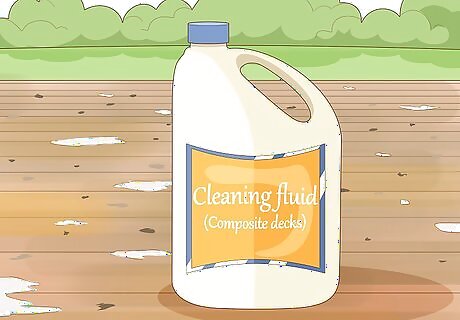
Get a composite deck cleaner for stained Trex. If stains have set in the composite deck, then you can get them out with a specialized cleaning fluid. Find a cleaning fluid approved for use on composite decks, ideally one that contains sodium hypochlorite. These are available at outdoor stores or on the internet. Do not use any cleaning products that aren't approved for Trex, especially wood cleaners. Solvents and corrosive chemicals can stain and damage your deck permanently, and you could also void your warranty if you use unapproved chemicals. If you're unsure what to use, contact the manufacturer or installer of your deck and ask for a recommendation.
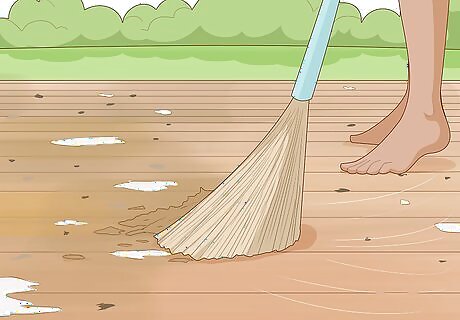
Sweep your deck clean. Removing all surface dirt and debris ensures that all the cleaning fluid makes direct contact with the deck. Use a normal broom for this task, no need for specialized bristles. If dust or debris has accumulated in the deck's grid pattern, use a smaller brush and clean it all out.
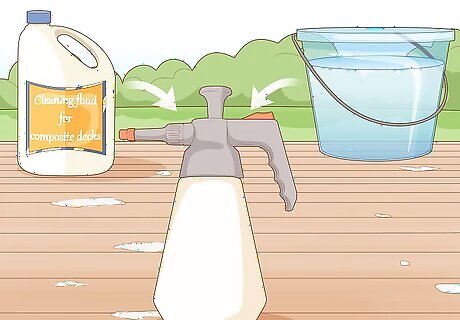
Mix the cleaner with water in the spray applicator. All cleaning fluids mix with water for application, but the specific mixture varies depending on which product you use. Check the directions on the product and follow that mixture carefully. Mix the water and cleaner in the spray applicator you'll be using. A hand pump sprayer is a simple applicator you could use. This tool has a large tank, so you can directly pour water and cleaning fluid into it. Remember to pump it several times before trying to spray. If you're using a pressure washer, it may have a compartment where liquid cleaner goes. In this case, pour the cleaner in here and connect the pressure washer to a hose. Remember to keep the pressure washer on a low setting.
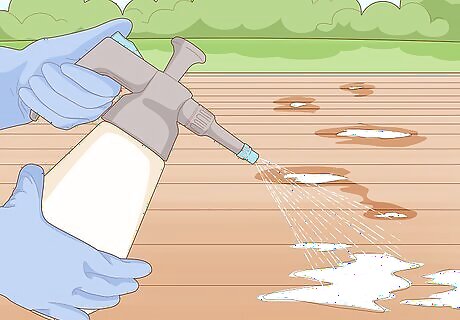
Spray the cleaning mixture on the deck. Use a sweeping motion and cover the entire deck, even if just a few spots are affected by the stains. Cleaning fluids usually restore a composite deck to its natural color and brightness, meaning the deck will have an uneven color if you only apply it to one spot. You should see suds while you apply the cleaner. If you don't see suds, check to make sure your power washer is working or you've used the right mixture. If you're using a pressure washer, keep the nozzle moving to avoid damaging the deck.
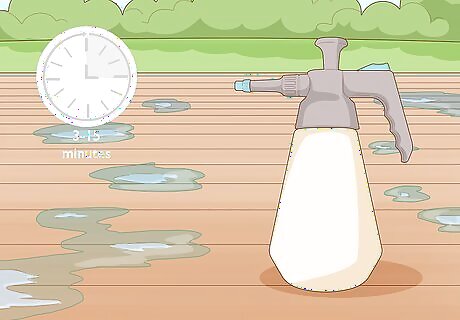
Let the cleaner sit for as long as instructed. All cleaning products should sit on the deck to soak in, but the length of time varies depending on which cleaner you're using. Carefully read all instructions and allow the cleaner to rest for the instructed time. Instructions usually tell you to wait several minutes, ranging from 3 to 15 minutes.
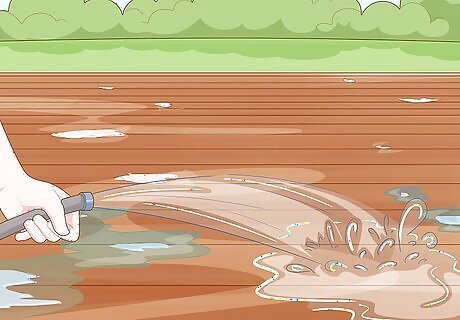
Rinse the deck. After giving the cleaner enough time to soak in, rinse the deck thoroughly to avoid streaks or a sticky film. Use either your garden hose or your pressure washer without any cleaning fluid in it. Angle your spray so all the suds flow off your deck. Don't let this mixture pool in one area, as it could stain your deck if it sits there.
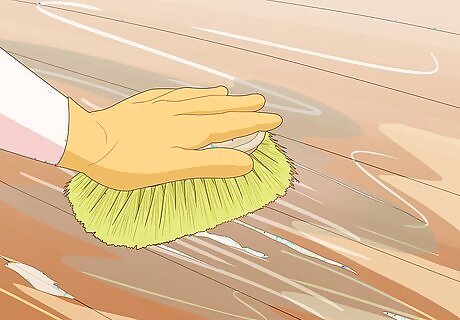
Scrub areas that are still stained. If a full surface clean hasn't gotten rid of all stains, you can use the cleaning fluid and water mixture as a spot cleaner. Mix this cleaning solution in a bucket. Then dip a soft-bristled brush into this mixture and scrub the stained area. Rinse thoroughly after you're done. Be careful with how hard you scrub. Composite deck is soft material, and you could wear away the surface with heavy scrubbing.
Making a Mold-Fighting Mixture
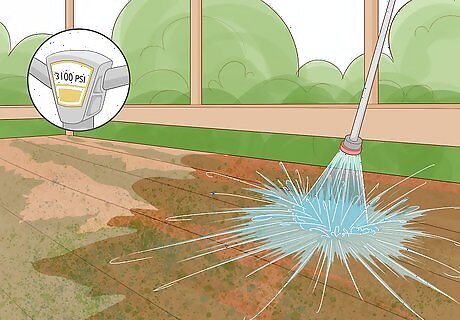
Pre-rinse the area with a hose. Focus on the areas where mold is forming. The pressure from a hose or power washer will remove some of the surface mold and make the cleaning process easier. If you use a power washer instead of a garden hose, the model should be less than 3,100 psi to avoid damaging the deck.
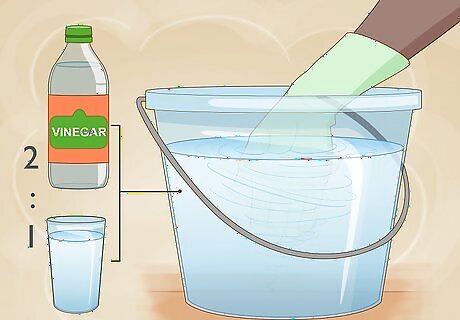
Mix a vinegar-water solution. Use a proportion of 2 parts vinegar to 1 part water for this mixture. Measure out your vinegar and pour it into a bucket, followed by the water. Stir or shake this solution so it mixes together. For example, if you use 1 US quart (0.95 l) of water, then use 2 US quarts (1.9 l) of vinegar.
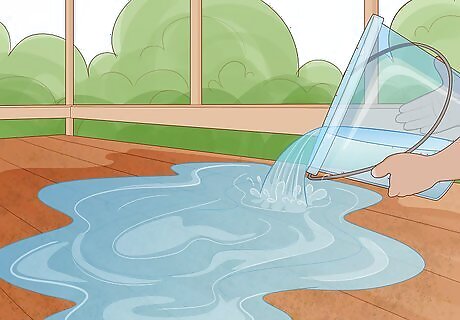
Pour the solution over the mold. Soak the entire area, making sure you haven’t missed any mold that might be hiding in the ridges on the deck. Remember to pour this solution directly onto the mold. Depending on how much mold is on your deck, you may have to mix more of your vinegar-water solution to complete the job.
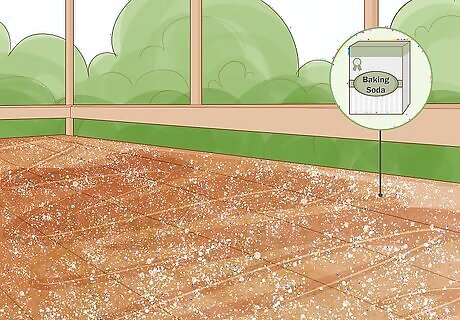
Sprinkle baking soda onto the area. Use a spoon or your fingers and apply baking soda to every place that you put the vinegar mixture. Spread the baking soda until you see it start reacting with the vinegar. You'll know because bubbles and foam will start forming. Don’t be worried when the mixture starts bubbling and foaming when you apply the baking soda. This is a natural and harmless reaction.
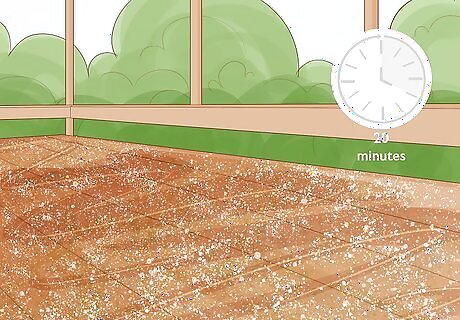
Let the mixture sit for 20 minutes. This bubbling solution breaks down mold, but it takes some time. Allow a few minutes for the solution to work before disturbing it. This time lets the mixture react with the mold and break it down so it comes off easily. 20 minutes is all you should wait, or the chemicals in the vinegar and baking soda could stain or damage the deck. Allow enough time for the solution to work, but not so much that you ruin your deck.
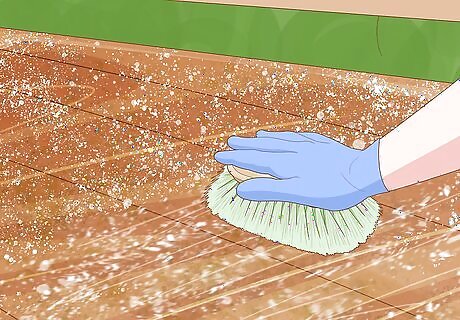
Scrub the area with a soft-bristle brush.After the solution has broken down the mold, scrubbing should remove any solid remnants. Use a firm, circular pattern to ensure you capture all remaining mold. Scrub well in the ridges and pattern of the deck. Mold loves hiding in these creases.
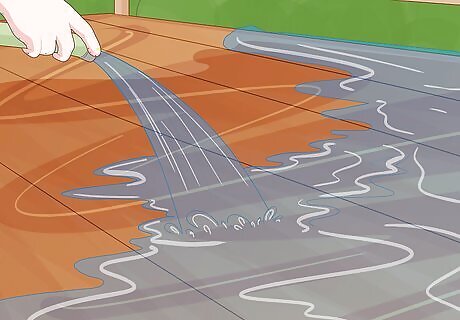
Rinse the area thoroughly. If left alone, the vinegar-baking soda solution can stain your deck. Complete the job by removing any remaining cleaning solution or mold. A thorough rinse will also remove any food sources for mold like dirt and grime. This prevents more mold from forming in the future.




















Comments
0 comment